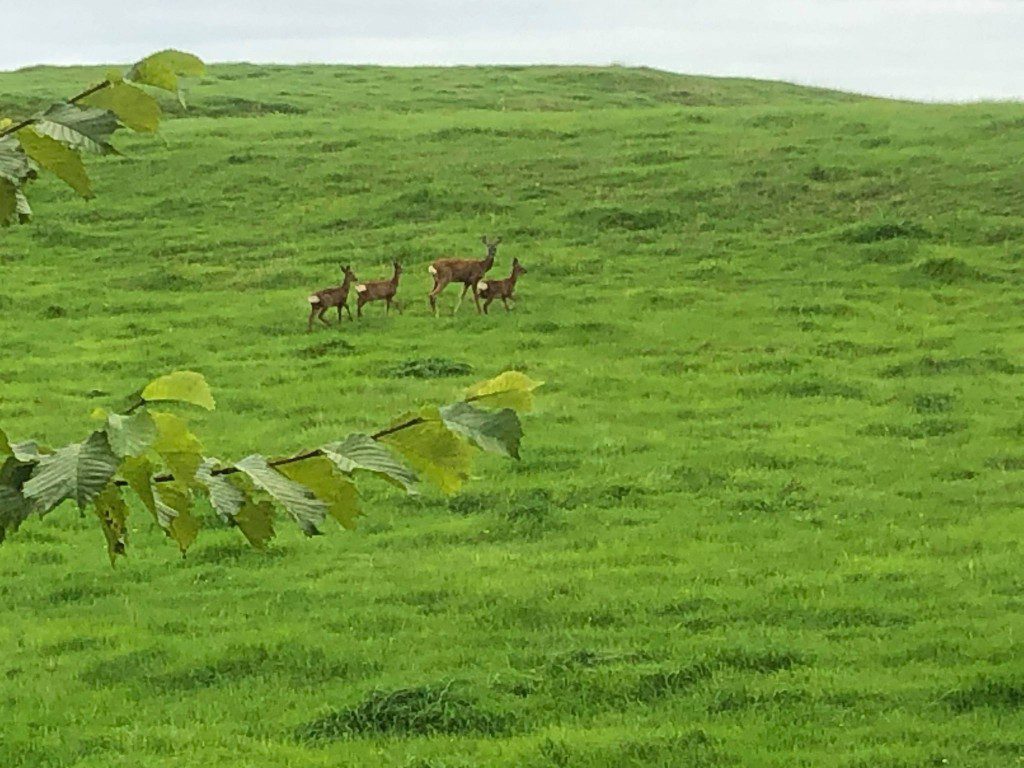Forestry and Land Scotland (FLS) is to carry out a cull of female deer in September as it manages increasing levels of negative impact from deer in Scotland’s national forests.
Deer numbers across Scotland have doubled to almost a million now from 500,000 in 1990, leading to the recent call from the Independent Deer Working Group for proactive deer management. At any one time on Scotland’s national forests and land, there are up to 150 million young trees vulnerable to damage from deer – and the cost of the damage done is several million pounds annually.
September culling, which is widely practised by land managers, is licensed by NatureScot and is being carried out following discussion with stakeholders, including Scottish Environment Link and the Association of Deer Management Groups (ADMG), which accepts such actions are sometimes necessary to protect woodland from damage.
Ian Fergusson, FLS’ Head of Wildlife Management, said;
“The total number of all four deer species across Scotland is now estimated to be around 1million and our surveys show deer population levels ranging from 4 deer per km2 to as high as 64 deer per km2 in some areas. A widely accepted sustainable population balance for woodlands and biodiversity protection is between 2-7 deer per km2.
“The current high levels of deer numbers pose a particular threat to establishing young trees and areas of forest regeneration which are a vital part of Scotland’s response to the climate emergency. It can also be ruinous to biodiversity projects and also poses a threat to the overall health of the herd, which in winter could struggle to find enough food and may result in many animals suffering a slow death from starvation.
“As responsible land managers of a significant area of Scotland’s forests and land, we have to act and achieving the necessary balance within the deer population is something that can only realistically be attained through culling.”
Keeping deer numbers to a level that is in balance with the habitats that they occupy will help to reduce these negative impacts and create conditions that allow deer to remain the vital part of Scotland’s biodiversity that they are.
Donald Fraser, NatureScot Head of Wildlife Management, said:
“Deer are an iconic part of Scotland’s nature and contribute greatly to its biodiversity. However, while there has been a lot accomplished to lower deer numbers in Scotland, in some areas high numbers mean they negatively affect woodlands and other habitats.
“NatureScot regulates and oversees deer management in Scotland. This includes the licensing of out-of-season control to prevent damage to woodland, agriculture and protect public safety. Around 130 authorisations are issued across Scotland (nine to FLS) for the prevention of damage which covers the period from 1 September. Sustainable management of Scotland’s deer is vital if we are to enhance biodiversity and achieve a net-zero future.”
Cull targets are set on the evidence of deer counts and surveys carried out by wildlife rangers and independent contractors throughout the year.
Anyone controlling deer in Scotland must do so in line with the terms and conditions of the authorisations and the published Wild Deer Best Practice Guidance, which outlines how deer welfare is to be safeguarded when culling.
Duncan Orr-Ewing, speaking for Scottish Environment LINK’s Deer Group, said;
“As environmental land managers we fully recognise the need for ongoing control of deer populations, and to address the climate and biodiversity crises. Without reductions in deer population, we will not meet native woodland expansion, peatland protection, and therefore carbon sequestration targets.
“Forestry and Land Scotland (FLS) delivers first-class deer management across their national forests and land to high environmental and animal welfare standards. We fully support FLS and have every confidence that the work will be carried out to these standards.”
As well as protecting young trees and growing forests, FLS deer management contributes to Scotland’s high quality food and drink sector by providing venison for the national, UK and international markets and helps sustain hundreds of jobs in rural communities around Scotland.





